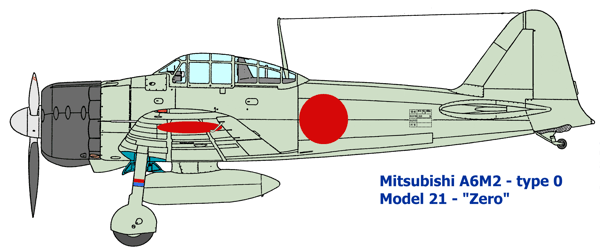The organization of the Japanese attack has been well documented, and details are available from multiple online sources. Identified by its tail number (AI-154) and red fuselage stripe, the Kam Zero was part of the 1st Fighter Combat Unit, originating from the carrier Akagi. The Kam Zero was assigned to the First Wave, Third Group / 2nd Division consisting of nine Zeros under the command of Lieutenant Commander Shigeru Itaya. Their mission was to strafe both Hickam Field and Ewa Marine Corps Air Station. Papers recovered from the pilot's body after the crash identified him as Naval Air Pilot First Class Takeshi Hirano.

Multiple Google searches uncovered a wealth of official and personal recollections of the attack. Several of these references made specific mention of the site and effects of the Kam Zero crash.
Four men of Fort Kamehameha's Ordnance Detachment were killed when a downed Japanese plane crashed into the ordnance machine shop. The plane had swooped down to strafe the flight line, its propeller was damaged when it struck the concrete runway, and the airplane was unable to regain altitude. The fort's ordnance machine shop was located in line with the damaged plane. All told, seven men were killed and at least twelve wounded at Fort Kamehameha during the attack.3
There were no definitive reasons given for the crash in any official reports, but it is unlikely that the Kam Zero was brought down by gunfire. During the attack, some Ft. Kam soldiers did set up machine guns in the barracks quadrangles, but according to some accounts, these soldiers first had to shoot the locks of the weapon supply rooms off, because no one could locate the proper keys. One Fort Kam veteran recalled that the tripod gun mounts were not sandbagged, and as result the machine guns were dancing about with recoil, making accurate fire impossible.
3 Dorrance, William H., Fort Kamehameha: The Story of the Harbor Defenses of Pearl Harbor, White Mane Publishing, 1993

